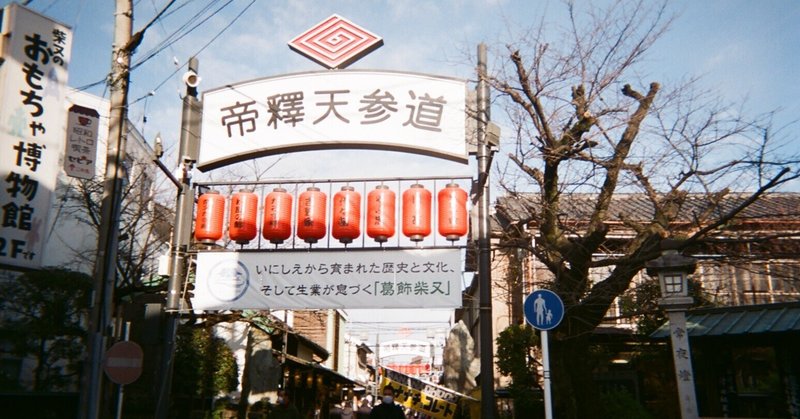
My hometown Katsushika
This time I would like to introduce Shibamata Taishakuten and its approach in my hometown of Katsushika, together with my film camera. I have lived in Katsushika since I was born, and I have had my Shichi-Go-San (seven-five-three) ceremonies at this Taishakuten and visit the shrine every New Year's. To begin with, Teishakuten is a temple. It enshrines kings in a world above the human world, the heavenly world. My mother works in Shibamata, where this Taishakuten is located. My mother also works in Shibamata, where this Taishakuten is located. She gets a lot of information about Shibamata from her colleagues at work, many of whom are local residents. I will make use of such baggage to explain. On the actual walk around, I used a simple use film camera. However, in places where the film ran out halfway through the walk or where we felt it was difficult to convey the information on the film, I did not use film. I would like to thank you for your understanding.
Shibamata station
Shibamata station is nostalgic. There is only one train every 15 minutes. There are two tracks but only one ticket gate. Therefore, to get to the platform on the opposite side of the station from the ticket gate, you have to cross the railway tracks inside the premises. The platform is also decorated with pictures and quotes from Tora-san, and the station name sign is ingeniously designed.


As can be seen from this, Shibamata Station is small and the area in front of the station is not prosperous. A statue of Tora-san welcomes you as you pass through the ticket gates of such a small station.

Tora-san is the protagonist of the film Otoko wa Tsuraiyo, for which a drama and a film were produced. As he lives in Shibamata, there are many places in Shibamata where he was filmed. Tora-san is also a tekiya (a person who sets up stalls at festivals and other events), so he travels all over Japan. His sister was always worried about this wandering Tora-san. The statue of his sister is behind the statue of Tora-san as seen from the station. She is seen looking away from the station.
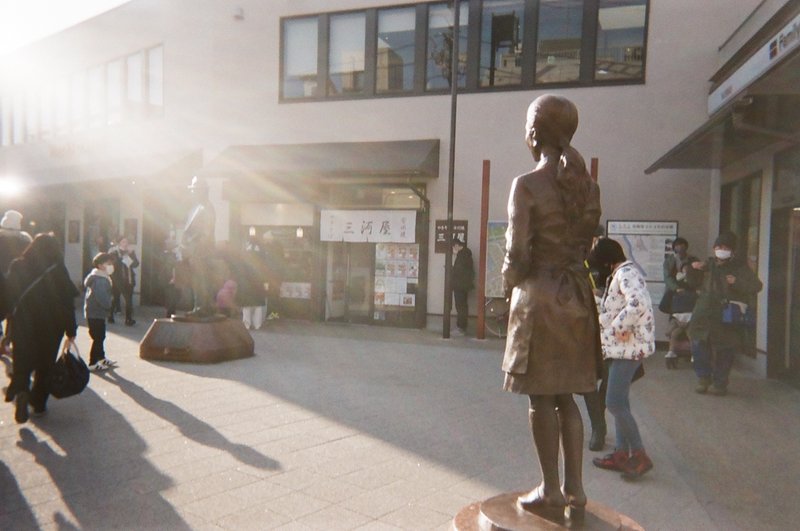
In addition, a brown convenience store was built in front of the station, as in Kyoto and Nara, to keep a good landscape. There used to be a series of small restaurants liked by the locals, but these have disappeared due to renovation work.
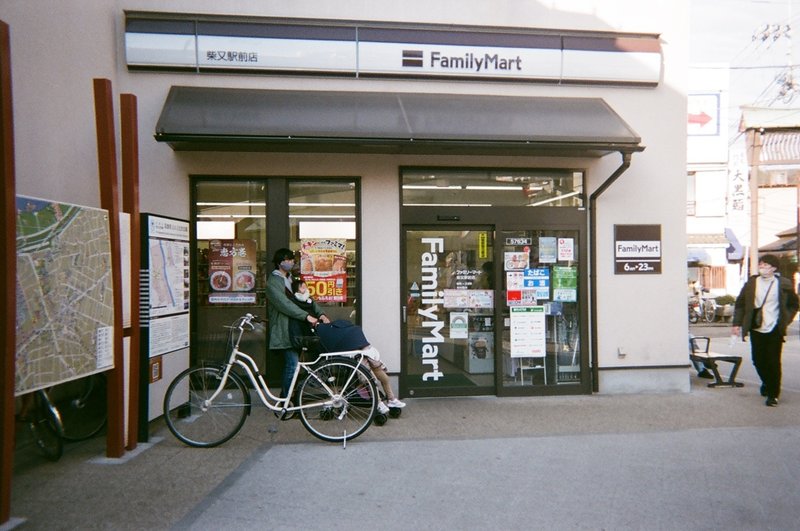
Road approaching Taisyakuten
The path from the station to the approach road is fairly straightforward. It is possible to go from the station as a flowing. A large sign welcomes you at the entrance to the approach road.

As it was a holiday, the place was crowded with many people. I thought there were only old people, but it was not like that, and I saw young couples and foreigners. And there are two things to eat on this approach road. Grass dumplings and eels.
Grass dumplings
There are four or five famous shops for grass dumplings. Takagiya is one of the most famous. The fact that this place was a filming location is one of the reasons for its popularity. Takagiya operates a coffee shop, where visitors can enjoy not only dumplings but also a teahouse menu from early morning.
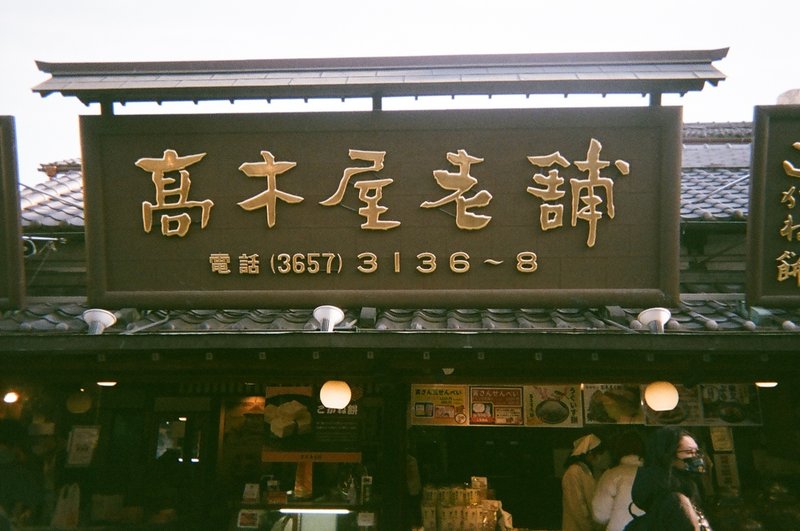
Such shops were thriving. Many people walk and eat on the approach road. But it is not these shops that I want people to eat. Local people do not buy grass dumplings from Takagiya and so on. If you want to eat really tasty dumplings, you should go to a shop called Yoshinoya.

This is not a beef bowl house. In fact, other shops use additives to make the grass dumplings look beautiful green. However, only Yoshinoya does not use additives. They use actual mugwort. This is why Yoshinoya's dumplings become hard quickly. However, the grass dumplings at this shop are real grass dumplings. Unlike other shops, Yoshinoya have a natural and delicious taste. Because of this shop's commitment, the shop is not open every day. They are only open on weekends, public holidays, and certain days, and are sold out in the afternoon as soon as they are gone. It is a very limited opportunity, but I hope you will get a chance to try it.

Eels
There are several river fish restaurants in this area of Shibamata. When this taishakuten was found in the Edo period (late 18th century), river fish restaurants opened because there were no tea shops around, which was inconvenient. Among them., this Kawachiya is vaguely delicious. There are also several eel restaurants. There are eel bowls that are grilled so well with burn marks, eels that are grilled so fluffy, eel bows that have had all their bones removed, and eels that are left in their natural state. At this restaurant, the grilled eel is served well. This restaurant is also frequented by locals, many of whom go there at the time of Shichi-Go-San or entrance celebrations.

The secret of the approach road
Shops on the approach road have uniform opening and closing times and holidays. This is in accordance with the representative. That representative is the upper shop closest to the main hall of the Taishakuen. This shop holds all authority and all shops must do as the shop says. This is a typical shopping street and a typical situation in Showa-era Japan. There is tonal pressure at work.
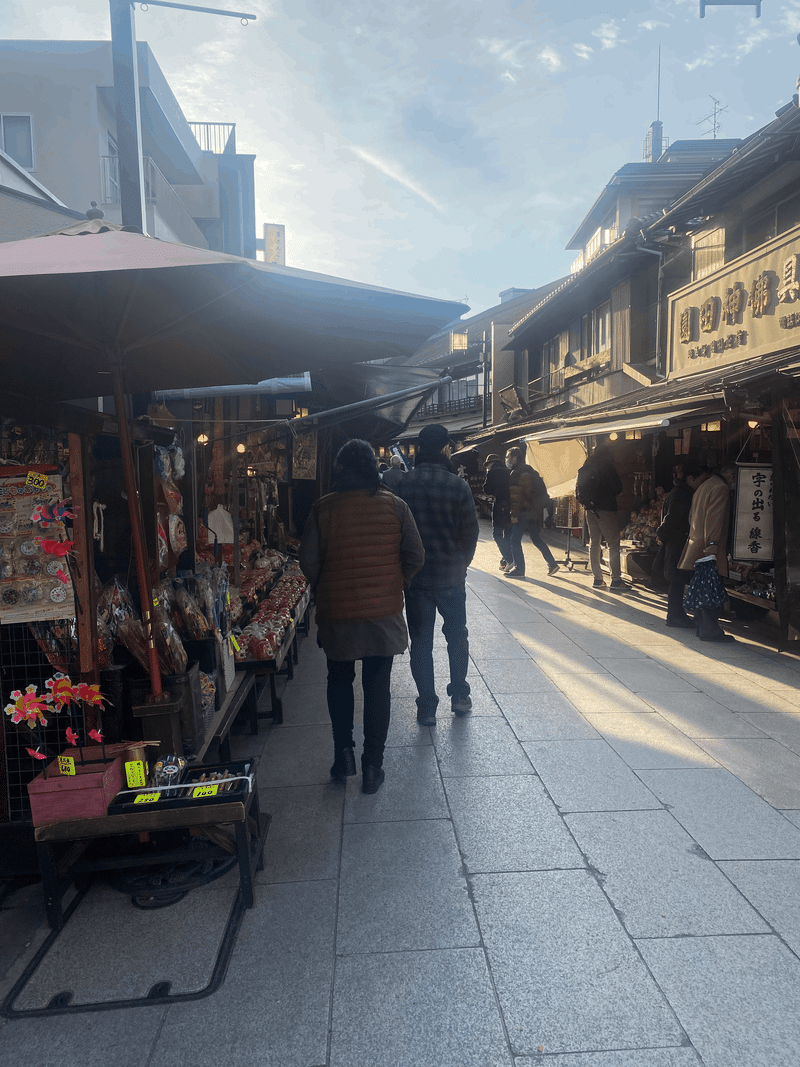

Taisyakuten

Teishakuten is one of the ancient Indian Buddhist patron deities called Shakro Divanam Indra. A gallery exists at the back of the main hall where the sculptures and gardens of the main hall can be seen.
In front of the gallery, I found a vending machine that I had heard rumors about for some time. There was a note on the machine saying, "This vending machine is for some people who need a talisman after the sanctuary has closed". This is a kind of kindness on the part of Teishakuten so that visitors can buy amulets at any time.

Sculptors
For 400 yen, you can buy a ticket to see the sculptures and the garden. The sculptures were built over several decades from the end of 1920s to 1934 It was nearly completed at one point, but were lost in the Great Kanto Earthquake (1910) and were finally completed. The gallery was built around the square-shaped Taishakuten to protect it from the wind and rain. Although there were many foreign tourists in the gallery, the only general information with Japanese, which made me feel itchy. The theme of the sculptures is based on the Lotus Sutra, the most famous of all Buddhist scriptures, which is also worshipped in Taishakuten. It is said that people's faith was elevated by these sculptures.

The four corners were also decorated with dragon faces, which in this school of India are the protectors of Buddhism.

My best sculpture is '”Diagram of the appearance of the Tahou treasure tower”.In the first place, Nyorai refers to an enlightened being, and this Taho Nyorai praises people's faith by appearing to them by raising his pagoda out of the ground. The Buddha appears to the people by raising his own pagoda out of the ground and praises their faith. In response, the people tremble with joy and worship the pagoda with sincere delight. I like this sculpture because I can clearly see the joyful expressions on the faces of the people, even in such a detailed sculpture.

Japanese garden

This garden exists behind the main temple. A corridor is laid out around a pond, allowing visitors to enjoy the Japanese garden. It is said to be the last garden of the Edo period, although it was finally laid out in 1965 (Showa 40). There were also carp and turtles in the pond, which made for a very relaxing experience.
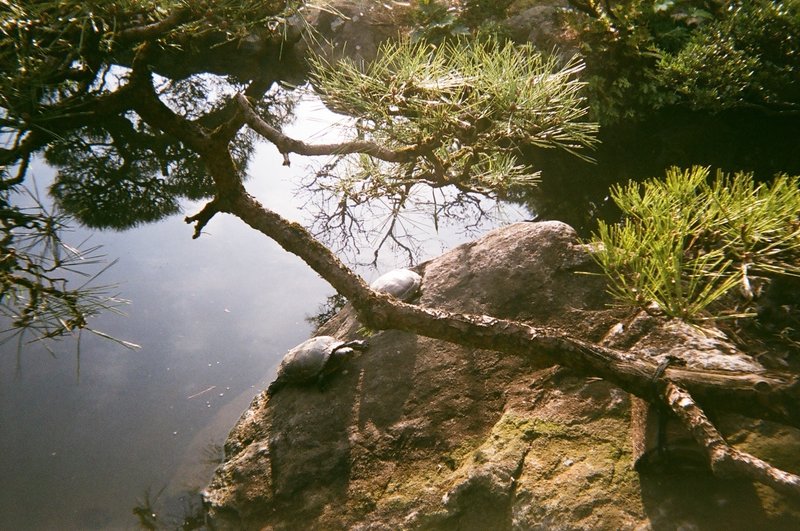
Conclusion
When I visited my hometown again this time, I realized that it was full of more wonderful people than I had expected. I learned that it is so much more enjoyable to come here for the purpose of exploring, whereas before I used to visit for some other reason. Also, as I became a university student and went out to various places, I really think that I was able to go back to my roots and reconfirm the good qualities of my hometown. I was happy to be able to preserve that quality with my favorite film camera. Shibamata is a town with quite a high level of historical culture. I hope that many people will visit.
Thank you.
この記事が気に入ったらサポートをしてみませんか?
